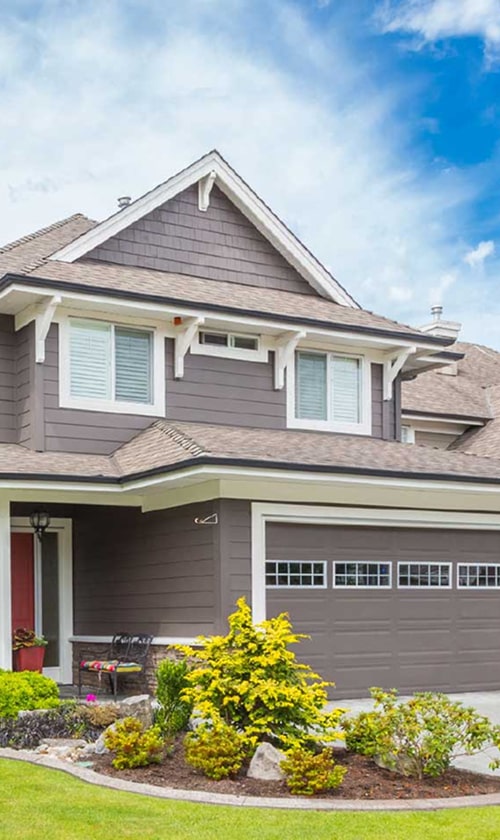Fundamentals of HVAC Energy Efficiency
Energy efficiency in HVAC systems is pivotal for reducing energy consumption and operational costs. We understand the critical nature of optimizing these complex systems to achieve significant energy savings. An energy audit serves as the foundational step, assessing current performance and identifying areas for efficiency enhancements.
Key Principles:
- System Design: Appropriate sizing and specification of HVAC components ensure optimal performance.
- Regular Maintenance: Preventative maintenance can help sustain energy efficient operation over time.
- Technology: Incorporating high-efficiency equipment and controls can lead to substantial energy savings.
Energy-Efficient Technologies:
- Variable Speed Drives (VSDs)
- High-efficiency motors
- Advanced thermostatic controls
By engaging in these practices, we take a proactive approach to reduce our HVAC systems’ energy footprint and ensure cost-effective operation.
Understanding the Benefits:
| Benefit | Description |
|---|---|
| Reduced energy bills | Lower energy use translates to cost savings |
| Environmental impact | Decreased energy demand leads to reduced greenhouse gas emissions |
| Operational longevity | Efficient systems typically have a longer service life |
We prioritize the integration of energy efficiency standards from the outset of HVAC system design, recognizing the advantages it brings to our clients and the environment. Our expertise steers us toward leveraging all applicable energy-saving opportunities, leading to more sustainable and cost-effective HVAC solutions.
HVAC System Design for Optimal Performance

Optimal HVAC system design integrates state-of-the-art technology and sustainable practices to achieve maximum energy efficiency while maintaining comfort and indoor air quality.
Integrating Renewable Energy and Efficiency
We understand the importance of reducing reliance on non-renewable energy sources in building design. By incorporating solar panels or geothermal heat pumps into the HVAC system, we can significantly lower energy consumption. Here’s how:
- Solar-Powered HVAC Systems: Utilising photovoltaic (PV) panels, we convert sunlight directly into electricity to power the HVAC system, aligning with sustainability goals.
- Geothermal Heat Pumps: These systems leverage the stable temperature of the earth to heat and cool the building more efficiently than traditional systems.
These renewable options not only curtail greenhouse gas emissions but also offer long-term cost savings due to lower operational expenses.
Incorporating Advanced Control Systems
To minimize energy waste, we integrate advanced control systems that intricately monitor and manage HVAC operations:
- Smart Sensors: Placed strategically throughout the building, they gather data on temperature, occupancy, and other variables to adjust settings dynamically.
- Energy Performance: Advanced HVAC controls ensure the system operates at peak efficiency, facilitated by real-time monitoring and automated adjustments.
Furthermore, lighting controls and HVAC scheduling work in tandem to optimize energy use while ensuring comfort. For example, reducing airflow in unoccupied areas during off hours without compromising the indoor environment.
Ensuring Indoor Environmental Quality
Indoor environmental quality is paramount, and our HVAC designs prioritize:
- Ventilation Systems: These systems are meticulously planned to manage airflow, preventing stagnant air and promoting a healthy indoor environment.
- Filtration: High-efficiency filters capture particulates, ensuring only clean air circulates within the space.
By focusing on proper insulation and sealing gaps, we improve the system’s effectiveness, reducing the energy required to maintain optimal comfort levels. Regular maintenance is essential to sustain these benefits over the lifespan of the HVAC system.
Standards, Regulations, and Best Practices

In this section, we focus on the stringent compliance with energy-related policies and building codes, alongside implementing crucial safety and quality measures to enhance HVAC system design.
Compliance with Energy Policy and Building Codes
The Energy Policy Act of 2005 laid a foundation for contemporary energy efficiency standards, targeting reduced emissions and minimized environmental impact. Air changes in operating rooms, particularly in hospitals, are regulated to ensure both patient and staff safety. The design and operation of HVAC systems must adhere to:
- ASHRAE Standards: which specify minimum energy performance and air quality requirements.
- International Energy Conservation Code (IECC) and International Building Code (IBC): detailing mandatory provisions for energy efficiency.
In alignment with climate change directives, these standards and building codes serve as benchmarks for energy efficiency in HVAC systems.
Implementing Safety and Quality Measures
Ensuring safety and quality in HVAC installations relates directly to protecting patients and staff in sensitive environments such as hospitals. Key measures include:
- Regular Maintenance and Inspections: To uphold safety standards.
- Quality Control Protocols: For components and overall system performance.
By integrating these measures with standard compliance, we contribute substantially to creating energy-efficient and safe HVAC systems for healthcare facilities.
Economic and Environmental Considerations
When designing HVAC systems, we must balance initial costs with long-term energy savings and consider the broader environmental impact, particularly the reduction of greenhouse gas emissions.
Assessing Cost and Energy Use Reductions
Improving the energy efficiency of HVAC systems can lead to significant cost savings. For businesses and homeowners alike, investments in energy-efficient systems are recouped over time through reduced energy bills. The payback period—the time it takes for the savings to cover the initial costs—can be shortened by capitalizing on financial incentives such as tax credits and rebates.
We typically see the following reductions when optimizing HVAC systems:
- Energy Usage: Can decrease by up to 20% with high-efficiency equipment.
- Cost: Operational expenses drop significantly, often reflected in utility bills.
Embracing renewable energy sources, like solar or geothermal, to power HVAC systems can also cut the reliance on fossil fuels. Simultaneously, integrating waste heat recovery technologies minimizes energy waste and optimizes overall system performance.
Addressing the Impact on Global Climate
The choices we make in HVAC design have far-reaching implications for our planet’s climate. By reducing energy consumption, we directly cut down on greenhouse gas emissions, helping mitigate global warming. Achieving sustainability goals is not only an ethical imperative but increasingly a regulatory one.
Consider these environmental impacts:
- Carbon Footprint: High-efficiency systems can reduce emissions by up to 40%.
- Fossil Fuels: Reducing reliance on these decreases our overall environmental impact.
Ultimately, by focusing on the economic and environmental aspects of energy efficiency standards, we’re paving the way toward a more sustainable and financially sound future.
Frequently Asked Questions
In this section, we address common inquiries regarding energy efficiency in HVAC systems, covering ENERGY STAR requirements, design optimization, critical factors, ASHRAE standards, the importance of design reports, and retrofitting options.
What are the current ENERGY STAR requirements for HVAC systems?
ENERGY STAR requirements for HVAC systems focus on high-efficiency performance. For central air conditioners, the current standard is a minimum SEER (Seasonal Energy Efficiency Ratio) of 15 for split systems and 14.5 for packaged systems, with higher ratings indicating better energy efficiency.
How can HVAC system design be optimized for energy efficiency?
Optimizing HVAC system design involves selecting high-efficiency equipment, employing advanced control strategies, and ensuring proper installation. Integration with energy management systems and regular maintenance are also paramount to maintaining optimal energy efficiency.
What factors are critical when considering the energy efficiency of an HVAC system?
When evaluating HVAC energy efficiency, it’s critical to examine the system size, installation quality, equipment efficiency ratings, and the building’s thermal envelope. Precise calculations and correct component matching are crucial for optimal performance.
Which ASHRAE standards should be incorporated for energy-efficient HVAC design?
We recommend incorporating ASHRAE standards 90.1 and 189.1, which provide guidelines for energy-efficient building design and operation. These standards are regularly updated to reflect the latest technologies and energy conservation methods.
What is the significance of a HVAC Design Report in meeting energy efficiency standards?
A HVAC Design Report is vital as it documents the design strategy, energy modeling, and compliance with relevant standards. It ensures that the design aligns with energy objectives and provides a reference for performance evaluations.
How can existing HVAC systems be retrofitted to improve energy efficiency?
Retrofitting existing HVAC systems may include upgrading components, such as installing variable frequency drives, improving ductwork for better airflow, or implementing advanced control systems for more precise temperature and ventilation regulation to enhance energy efficiency.




